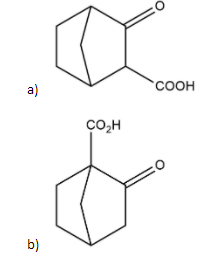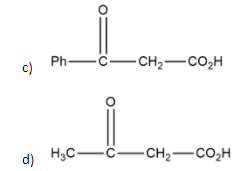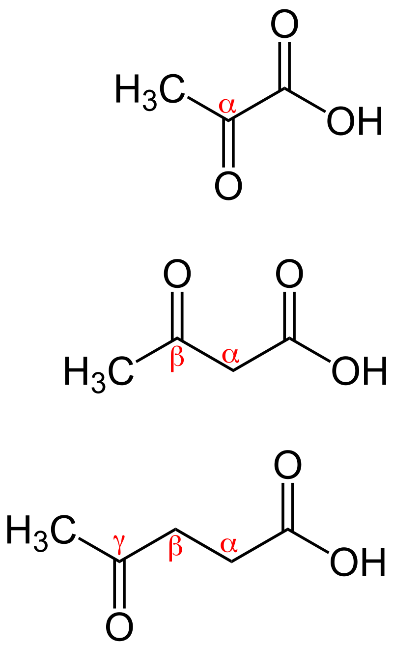
Which \[\beta \]- keto acid shown will not undergo decarboxylation?




Answer
575.4k+ views
Hint: Keto acids are also called oxo acids. These are organic compounds that contain a carboxylic acid group and a ketone group. There are 3 types of keto acids alpha, beta and gamma keto acids.
Complete step by step answer:
Compounds which contain carboxylic \[COOH\]and ketone group \[C=O\]present in it are known as keto acids or oxo acids. On the basis of attachment of ketone groups these are divided into 3 parts.
\[\alpha \]- keto acid in which ketone group is present at alpha carbon atom
\[\beta \]- keto acid in which ketone group is present at beta carbon atom
γ - keto acid in which ketone group is present at gamma carbon atom which can be shown as:

Decarboxylation takes place when carboxylic acids containing a carbonyl group two bonds away (on the \[\beta \]carbon) are heated and carbon dioxide is lost during this process.
In the case of compound b, \[\alpha \]\[\beta \]−keto acid having it's \[\alpha \]carbon at bridged head so it can't undergo tautomerization and it has a fixed hybridisation of \[s{{p}^{3}}\] and can't undergo decarboxylation while on the other compounds \[\beta \] position is free so decarboxylation can be occur easily.
Thus, option b is right.
Note: Decarboxylation is the process in which loss of carbon dioxide is there in this process of tautomerization. Tautomerism is the ability of certain organic compounds to react in isomeric structures that differ from each other in the position of a hydrogen atom and a double bond.
Complete step by step answer:
Compounds which contain carboxylic \[COOH\]and ketone group \[C=O\]present in it are known as keto acids or oxo acids. On the basis of attachment of ketone groups these are divided into 3 parts.
\[\alpha \]- keto acid in which ketone group is present at alpha carbon atom
\[\beta \]- keto acid in which ketone group is present at beta carbon atom
γ - keto acid in which ketone group is present at gamma carbon atom which can be shown as:

Decarboxylation takes place when carboxylic acids containing a carbonyl group two bonds away (on the \[\beta \]carbon) are heated and carbon dioxide is lost during this process.
In the case of compound b, \[\alpha \]\[\beta \]−keto acid having it's \[\alpha \]carbon at bridged head so it can't undergo tautomerization and it has a fixed hybridisation of \[s{{p}^{3}}\] and can't undergo decarboxylation while on the other compounds \[\beta \] position is free so decarboxylation can be occur easily.
Thus, option b is right.
Note: Decarboxylation is the process in which loss of carbon dioxide is there in this process of tautomerization. Tautomerism is the ability of certain organic compounds to react in isomeric structures that differ from each other in the position of a hydrogen atom and a double bond.
Recently Updated Pages
The number of solutions in x in 02pi for which sqrt class 12 maths CBSE

Write any two methods of preparation of phenol Give class 12 chemistry CBSE

Differentiate between action potential and resting class 12 biology CBSE

Two plane mirrors arranged at right angles to each class 12 physics CBSE

Which of the following molecules is are chiral A I class 12 chemistry CBSE

Name different types of neurons and give one function class 12 biology CBSE

Trending doubts
Which are the Top 10 Largest Countries of the World?

What are the major means of transport Explain each class 12 social science CBSE

Draw a labelled sketch of the human eye class 12 physics CBSE

Differentiate between insitu conservation and exsitu class 12 biology CBSE

The computer jargonwwww stands for Aworld wide web class 12 physics CBSE

State the principle of an ac generator and explain class 12 physics CBSE




